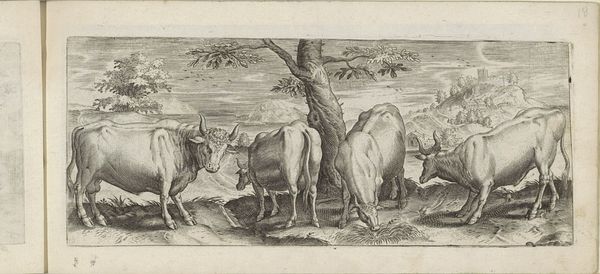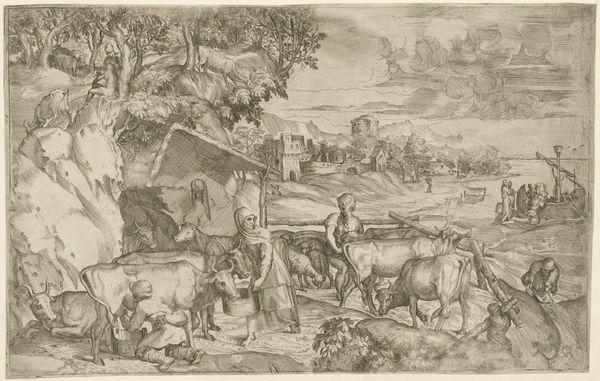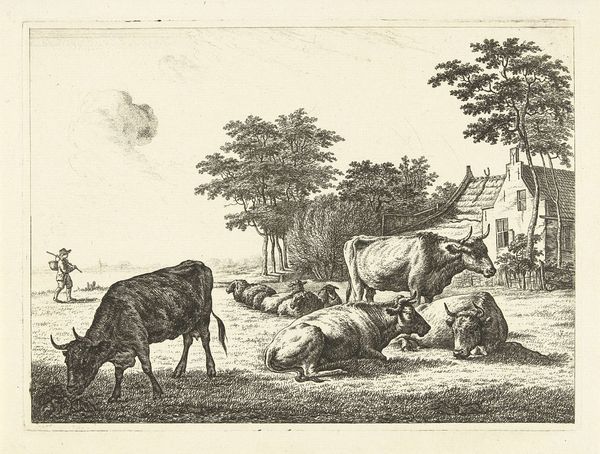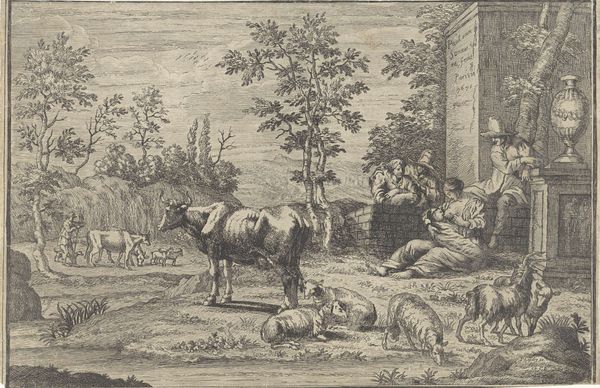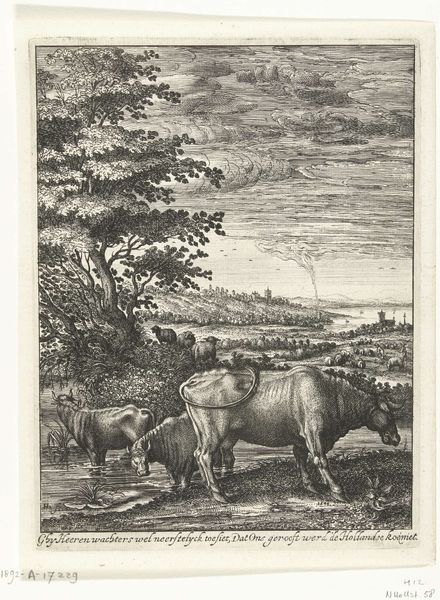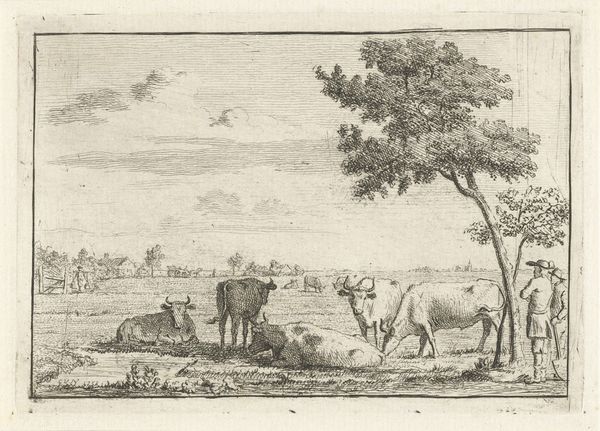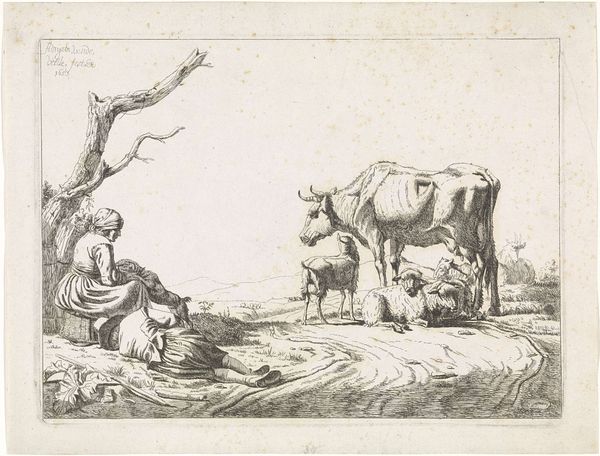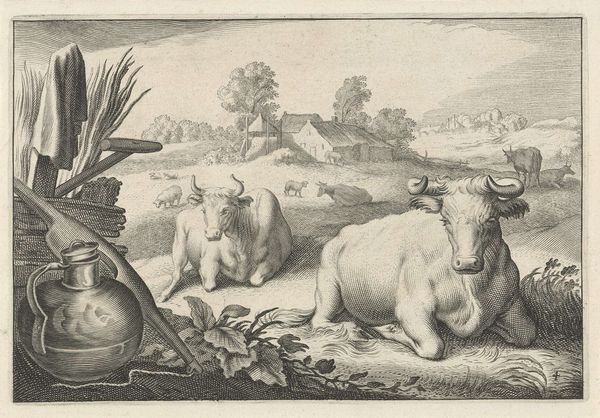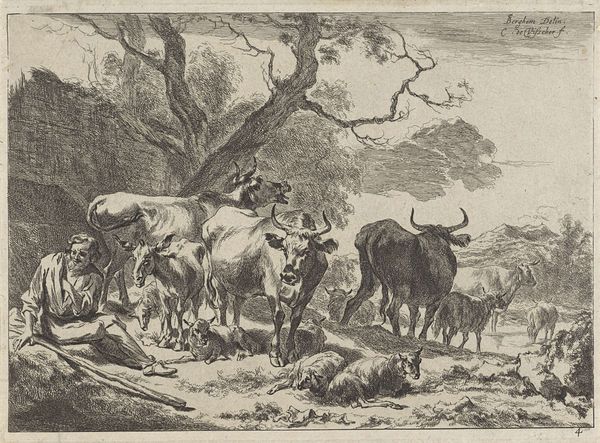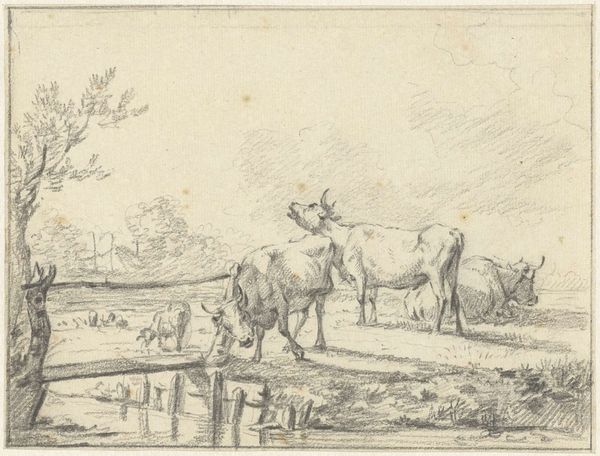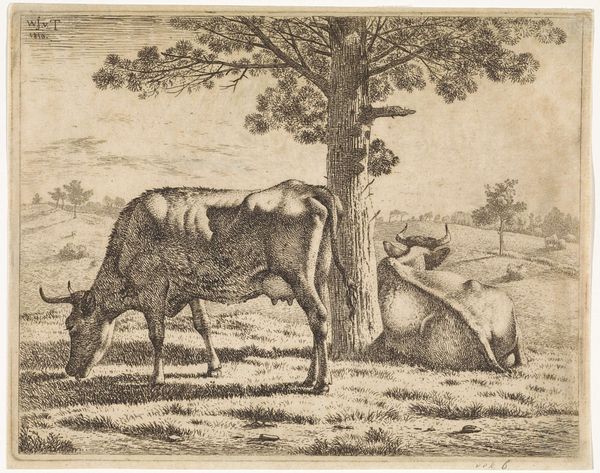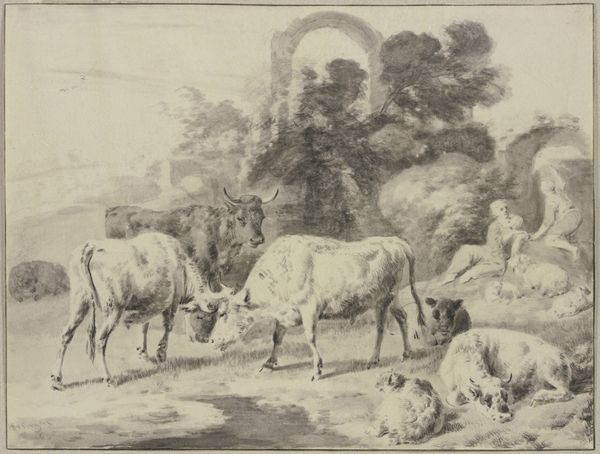
print, etching
# print
#
etching
#
landscape
#
figuration
#
genre-painting
#
italian-renaissance
#
realism
Dimensions: height 214 mm, width 295 mm
Copyright: Rijks Museum: Open Domain
Curator: Welcome. Before us hangs Battista Angolo del Moro’s “Landscape with Milk Cow,” an etching dating sometime between 1524 and 1575. It's a fascinating example of genre painting, currently held at the Rijksmuseum. Editor: There’s a quiet intimacy about this piece, even through the formality of the etching. It reminds me of the kind of pastoral scenes I’d dream up as a kid, fields full of placid cows, rendered in almost hypnotic detail. What's your take? Curator: I'm drawn to how Angolo del Moro presents rural life not just as bucolic escape but also as economic reality. You see the detailed portrayal of the cattle—a key marker of wealth and status during the Italian Renaissance. It is interesting to think how, since the late Middle Ages, the rising of capitalism caused artists to portray an interest into everyday life of farmers. Editor: Definitely. You know, sometimes, art historians can get too serious about the political forces that are shaping production and consumption... Curator: But the connection between patronage, the rise of printmaking, and the distribution of such images to wider audiences—all very crucial, because art does not exists in a bubble. It allows common people to enjoy an aristocratic luxury like fine arts, Editor: Sure, sure... But for me, it all keeps coming back to that humble moment, there by the cow, where an individual extracts an offering of life-giving nourishment in the form of milk. Curator: And it served to legitimize the landowning classes, of course. The figures milking or carrying pails also underscores human labor. Editor: Oh, come on! So this isn’t some celebration of the simple life? You're going to bum me out. Curator: Not at all, it is both. This print testifies to a period deeply fascinated by the connection of people to the land. And how that translated to power. Editor: I guess in art, as in life, you can’t really separate the sweet from the sour, eh? Curator: Exactly. And considering the location of the work now within the collection of the Rijksmuseum makes one consider, for whom it might have been made. What audience did the Artist have in mind. Editor: Right, right... A beautiful snapshot of everyday folks just doing their everyday thing and now it is on the other side of History. Makes me feel even more connected with my species... Curator: And now we invite you, the viewer, to bring your own lens to this quiet, industrious moment captured in ink. Thank you.
Comments
No comments
Be the first to comment and join the conversation on the ultimate creative platform.
